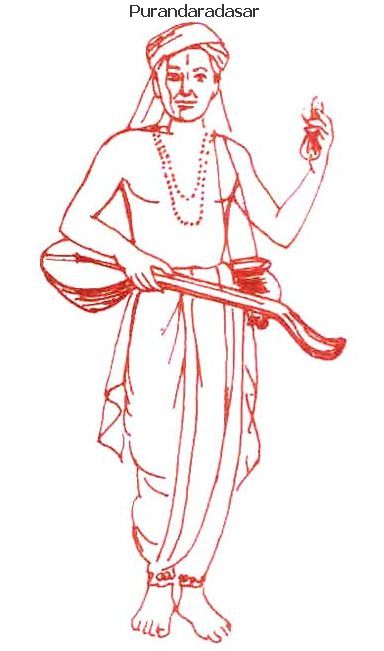Ashtapathi Bhajan - Part V

11. Paraa Bhakthi
12. community living principles
13. strength of Unity
14. value of collective prayer
15. limitations of wordly relationships
16. Godly principle
Instead of the Sringaara Rasa in Ashtapadi, we must see Bhakthi Laya Bhava in this Kaavyam. Raadhika representing all the Jeevaathmaas, Sri Krishna the Paramaathma and Sakkhi the Guru. All of us (Jeevaas), having separated from the Paramaathma, have come to this world of matter & got ourselves entangled in Maaya (Ignorance) and forgot about our origin - the Permanant Bliss form of ours, we must feel the pangs of separation as suffered by Raadhika,we must follow the advice of our Gurus, we must curse our status, we must cast away our Ego, we must crave for the presence of Lord and ultimately reunite with the Paramaathma, we should realise the beauty and power of Nature, we must enjoy the happiness within and not outside,we must enact the Leelaas of God like Jayadeva and Padmaavathi did and follow the principles therein, we must be aware of the Bhagawath Krupa when it flows and keep ourselves fit for receiving it. All the Puraanaas and Kaavyaas are trying to project the way of life one should lead in order to get re-united with the God.
The essence, thus, of this Amara Kaavyam is the sorry state of affairs of Jeevathmaas and the way to re-unite with Paramaathma through Prema Bhakthi & total surrender to Lord as adviced by Sakkhi (who has played the role of a Guru). The best bhaava we should possess while doing Ashtapadi is "NAAYIKA NAAYAKA BHAAVAM" or "GOPIKAA BHAAVAM",which depicts the Bhakthi Layam.We have stated earlier that Raadhakalyaanam took place in Brahma Muhoortham. As per the Vendanthic explanations, the best time for Dhyaanam is Brahma Muhoortham. Thus, Raadhakalyaanam is the Union of Jeevaathma with Paramaathma & the best time for it, is the Brahma Muhoortham.
The Paddhathi: Before a Kalyaana Paddhathi, it is customary to sing all the Ashtapadis,which itself form a special Paddhathi called "POORNA ASHTAPADI PADDHATHI".The paddhathi starts with RaamaNaama, Hari Naaraayana Song,Thodaya Mangalam, Guru Keerthanams and then the three Poorva Slokams of Ashtapadi:
"Yadgopi Vadanendu Mandanam Aboodu ....."
"Raadha Manorama Ramaavara Raasaleela ..."
"Sree Gopaala Vilaasini Valayasadrathnaadi..."
The third one is normally sung in Poorvi Kalyaani Raagam as it is followed by a song "PADMAAVATHI RAMANAM - JAYA DEVA KAVI RAAJA" in the same raagam, giving short history of Jayadeva and Padmavathi & about the origin of this Kaavyam. Then the slokams:-
"Meghair Medhuram Ambaram",
"Vaakdevatha Charitha Chithritha Chittha Sadma",
"Yathi Harismarane Sarasam Mana:" etc.
are sung. Now starts first Ashtapadi with poorva sloka
"Vaacha:pallava Yathyumaapathidhara:"